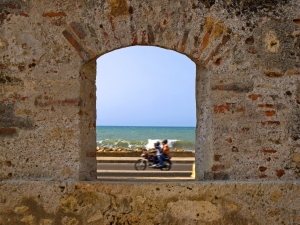We Have Compiled 5 Tips to Help You Better Understand Motorcycle Insurance
Motorcycles are a fun, exhilarating way to experience the best that California has to offer. As with driving a car, however, there is a hefty responsibility that comes with the thrill of the ride. That responsibility is you being insured against threats to both your safety and the safety of others. For this reason, it is extremely important to be insured against the risks you face when you climb on your bike. However, knowing what the minimum insurance requirements are for your motorcycle, knowing how to get the best deal and knowing what to look for in an insurer can be a daunting task.
 1) There Are Several Different Coverage Options Available to You
1) There Are Several Different Coverage Options Available to You
First, you should be aware of each of the different kinds of insurance that motorcyclists can buy. The most basic is liability insurance. This type of policy covers damages that you may cause to the other motorists involved in an accident, up to the limits you have purchased, but it will not cover your own injuries or any damage to your motorcycle. In the state of California you are required to carry at least the state minimum liability coverage, which is 15/30/5 and is the same minimum that you must carry if you are insuring a car. 15/30/5 means up to $15,000 for bodily injury for any one person injured, up to $30,000 total for all injured parties and $5,000 to cover all property damage that you may cause. AIS does not consider $5,000 to be sufficient coverage given the high cost of vehicle repair, and we typically suggest a minimum property damage limit of $10,000.
Collision and Comprehensive Coverage – collision coverage would take care of damages to your motorcycle, regardless of fault, less your chosen deductible. Comprehensive coverage would take care of damage to your motorcycle resulting from theft, fire, vandalism or if you were to collide with an animal, less your chosen deductible.
Uninsured Motorist coverage is another common coverage that will provide coverage for you and your motorcycle, depending on the level of coverage you choose, in the event that you are involved in an accident with a person that may not have a current, in force policy at the time of the accident. It is important to note that your insurance company will have to investigate your claim and confirm the other party is not insured prior to this coverage kicking in.
There are additional coverage’s available for you and your motorcycle, such as custom parts and equipment and Medpay (Medical Payments). The coverage’s listed above are the most common, however, we do suggest you speak with an agent or a carrier directly to understand all of your options as all companies are different.
2) Don’t Assume It Will Be Like Car Insurance
Rates for motorcycle insurance are not the same as car insurance and may vary greatly based on the insurance company through which you buy your policy. The reason for this is that although motorcycles typically have a lower purchase price and value, they carry a much higher risk of rider injury which is a rating and risk factor when determining premiums. Similarly, coverage can differ depending on your previous driving record, your age, the motorcycle type, and a handful of other factors.
Using a company like AIS to collect multiple quotes from various insurers allows you to get a better sense of the motorcycle insurance market and will allow you to make the best choice possible for your own needs.
3) Ensure You’re Working With a Specialist
Motorcycles are not categorized with cars on the road or in the eye’s of insurance companies, after all they do require a special type of driver’s license. As a result, you should go with a company that has experience insuring motorcycles and their riders. The rules and recommendations for what to cover when you own a motorcycle are very different than with cars, and only an experienced agent will understand the ins and outs of motorcycle coverage. Speaking with an expert will help you avoid potential pitfalls, both in buying the coverage you need and avoiding problems if or when you need to use your policy and file a claim.
Motorcycle clubs have a lot to offer experienced and novice motorcyclists alike, and they can help when it comes to insurance too. Many clubs have arrangements with insurers for discounts, and club members can offer you valuable guidance for working with insurers and finding the company that is right for you.
5) Remember That Any Extras You Add May Not Be Covered
If you are planning to attach extra equipment to your motorcycle, such as a sidecar, be sure to mention it while discussing your policy with your insurance agent or company. Most insurance companies that insure motorcycles will advise you to add extra equipment coverage to your policy if you are planning to add aftermarket or custom equipment to your bike.
If the open road is calling your name, but you want to make sure you are safe when you answer its call, get in touch with AIS. For nearly half a century we have been helping California get on the road, and have over twenty years of experience with motorcycle insurance. We offer quick and convenient ways to make payments and adjust your policy as needed. Just like you wouldn’t get on the road without your helmet, do not get on the road without insurance. Let AIS help make sure you are covered and help you find the best rates.
This content is offered for educational purposes only and does not represent contractual agreements. The definitions, terms and coverage’s in a given policy may be different than those suggested here and such policy will be governed by the language contained therein. No warranty or appropriateness for a specific purpose is expressed or implied.

